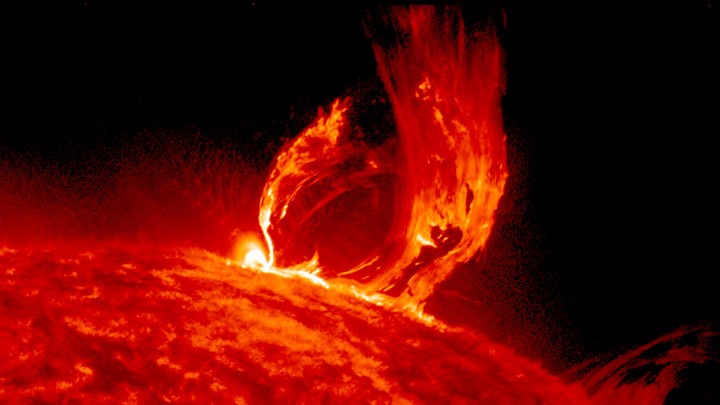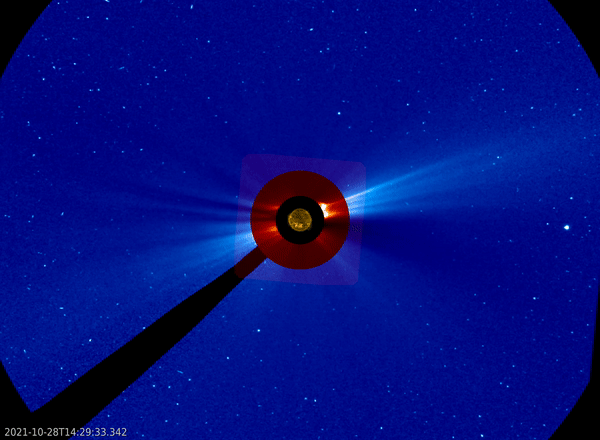Massive solar explosion felt on Earth, the moon and Mars simultaneously for the 1st time ever
Instruments in different parts of the solar system all captured radiation from the same coronal mass ejection for the first time ever.

On Oct. 28, 2021, a huge burst of plasma and magnetized particles erupted from the sun. The massive solar outburst washed over Earth, the moon and Mars, bathing them in radiation. And, for the first time, instruments on all three bodies measured the same event almost simultaneously.
On Mars, the European Space Agency’s ExoMars Trace Gas Orbiter (TGO) and NASA's Curiosity rover registered the influx of energized particles. On the moon, these particles were picked up by the Chinese National Space Administration's Chang'e-4 and NASA's Lunar Reconnaissance Orbiter (LRO). And closer to home, the German Aerospace Center's Eu:CROPIS satellite detected the radiation from low Earth orbit. The effects of this solar hat trick were reported Aug. 8 in the journal Geophysical Research Letters.
Understanding such events, known as coronal mass ejections (CMEs), is crucial for future space exploration, including planned missions to send astronauts to Mars and to establish a scientific outpost on the moon. On Earth, our magnetic field acts as a shield against most dangerous solar outbursts. But the moon and Mars lack this protective magnetosphere, which means that a lot more radiation makes it to their surfaces.

All that radiation can have a negative impact on astronauts. Exposure to high doses of radiation can lead to skin irritation, nausea, blood disorders, weakened immunity and even cancer, according to a 2014 study published in the journal Life. In acute cases, it can cause burns and neurologic degeneration. A dangerous dose is considered to be around 700 milligray (1 gray being one unit of radiation). Fortunately, the Oct. 28 CME was much weaker than that, only clocking in at around 31 milligray — but CMEs become both more frequent and more intense as the sun approaches the peak of its 11-year solar activity cycle, which could begin as soon as the end of 2023.
The new study found that Earth's magnetosphere and atmosphere rendered the radiation from the event negligible by the time it reached our planet's surface. Mars's surface got about one-30th of the initial dose thanks to buffering effects from its atmosphere. But just over half of the initial dose of radiation from the CME hit the moon's surface.
While this particular CME event wasn't strong enough to potentially sicken a human, half of the radiation from a larger outburst could be deadly. Studying where and how CMEs hit bodies beyond Earth could help scientists develop the shielding necessary to protect future astronauts.
Sign up for the Live Science daily newsletter now
Get the world’s most fascinating discoveries delivered straight to your inbox.
"Space radiation can create a real danger to our exploration throughout the Solar System," Colin Wilson, a project scientist on ExoMars TGO, said in a statement. "Thanks to data from missions like ExoMars, we can prepare for how best to protect our human explorers."

Joanna Thompson is a science journalist and runner based in New York. She holds a B.S. in Zoology and a B.A. in Creative Writing from North Carolina State University, as well as a Master's in Science Journalism from NYU's Science, Health and Environmental Reporting Program. Find more of her work in Scientific American, The Daily Beast, Atlas Obscura or Audubon Magazine.









